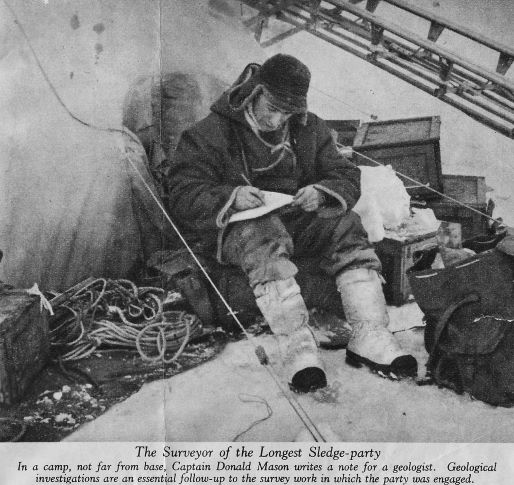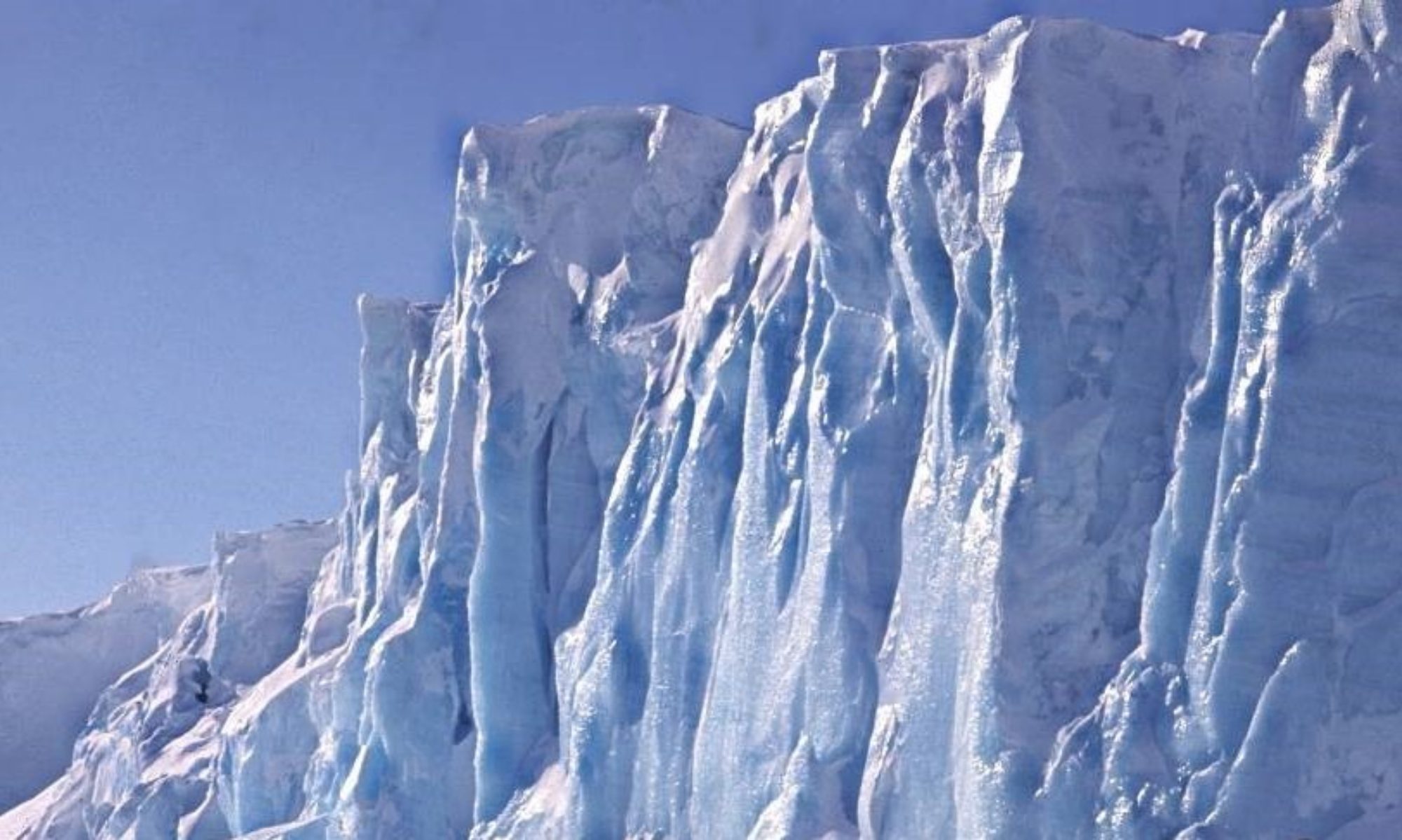Header Photo: EWKW (“Kevin”) Walton Heading Home
The “Picture Post”, December 25 1948.
A handwritten note at the top of the article by Ruth Walton states – “This is the article that took us on our honeymoon”. Money was tight in those days!!

The most difficult part of one’s return from Antarctica is to convince people that life down South, with its very generous allowance of cold and snow, is not now full of the hardship and discomfort connected so rightly with such names as Scott and Shackleton. And the purpose of this article is to pay tribute to men of all nations who were there before us, whose carefully recorded experience has laid the foundations of modern Polar life.
Continuing from Stonington, 1947….
Two and a half years of life cannot be compressed into a few paragraphs, so I intend to try and answer several questions typical of many that I have been asked. We were eleven men in a base, in a hut that we built ourselves in the Antarctic, and the answers can come from there. How was it, people say, that the cold and rigour of the climate did not affect you as much as it did others in days gone by?
Well, much is due to equipment, but most to the training and technique so freely passed on to us. In the coldest weather our clothing is little more than one wears in an English winter; long underwear, flannel trousers and a sweater, the whole covered by light, high-quality windproofs. These clothes are only warm when dry and results have always justified the carrying of extra fuel for this purpose.

Then, again, people ask whether the modern idea of comfort does not destroy the sense of comradeship which comes from hardships endured together.
Unless it is taken to absurd extremes I think not. Discomfort is always available for those who fail to use the detailed experience of others, and in general it only has to be endured by the inefficient traveller. The efficient use of well-tried, yet simple, modern equipment means entire dependence on one another and this is surely a true basis for comradeship.
Next, what did we eat? At base, except for an increase in fat ration, our daily diet was little different from that at home. Dehydrated foods are used extensively and the variety and quality of our food was maintained by having a different member of the party as cook each week. After two years, even the worst of us could cook excellent bread, and dainties such as iced cakes and brandy snaps were regularly produced. Seal or penguin never seemed very popular but our health did not seem to suffer from the lack of fresh food.
Away from base, rations were very different, the result of years of trial and experiment. The main daily items are: pemmican – 6 ounces; butter – 6 ounces; sugar – 3 ounces; oatmeal – 2.5 ounces; pea flour – 2 ounces; dehydrated milk and biscuits, and small extras such as cocoa and tea. (Pemmican is cooked, dried and finely-ground fibroin of beef, rather resembling the dregs from a cup of beef tea). Except when lucky enough to get fresh seal, the dogs’ daily ration is 1 pound of pemmican.

Did we use dog transport or mechanical transport? We used dog transport, not because we were prejudiced but because we felt that we well-trained dog team is still safer and more versatile than any mechanical transport available today. Until one has tried, it is impossible to visualise the effort required to train a dog team for a long journey. There is no short cut and the success or failure of a carefully planned journey is entirely dependent on the training of the teams employed. The will to pull is inbred in every Husky and once one has achieved the nucleus of a few dogs that will pull together, youngsters quickly learn to pull in the right direction by example. To each other the dogs are wild and boisterous, jockeying for position as boss. To humans they are affectionate and loyal, sensing in some way how we are as dependent on them as they are on us. The 40ft whip used for dog-training is rarely used for punishment. The sound of the sealskin lash in the snow is always sufficient to rouse any lazy dog from his dreams. One good surfaces a team can pull its own weight at 15-20miles per day, but the training of a team shows most when travel is slow and difficult. When every yard gained is counted, only then can one get glimpses of the unbelievable power of these fine animals.

Two final questions. First – living in such close company with each other, did not your tempers become frayed? Yes, on occasions, but we found that a walk outside and a talk with one’s own dogs quickly put matters right. We achieved a degree of tolerance towards each other experienced, I know, by very few. Second – why did you go, and would you go again? Nansen, comparing knowledge with exploration, once said, “Man wants to know, and when he ceases to do so, he is no longer man”. I wanted to go, I went and I want to go again, yet I still can’t produce my reasons. Shackleton once referred to it as the “Call of the little men”. Perhaps he was right!
Written by Kevin Walton – 1948, for “Picture Post” Magazine.

